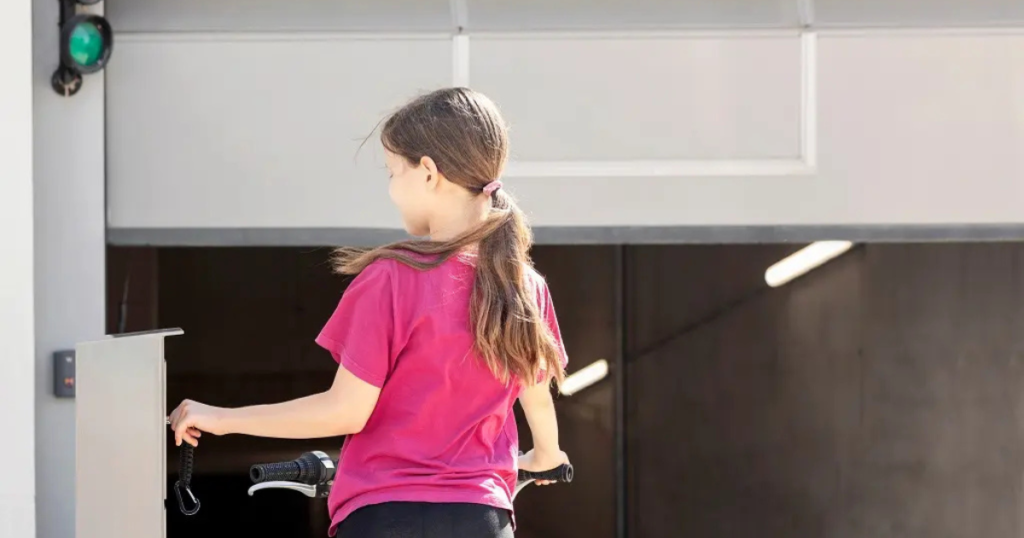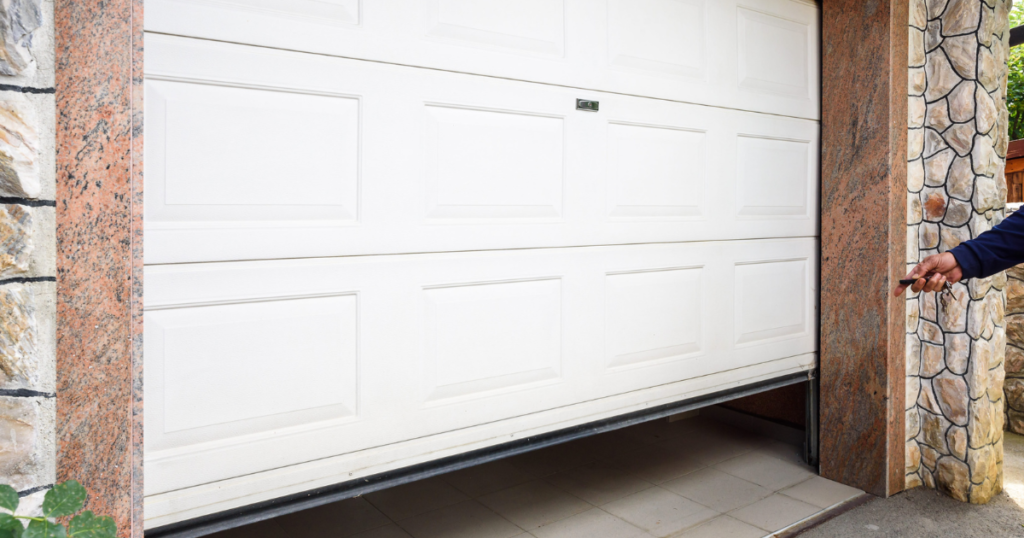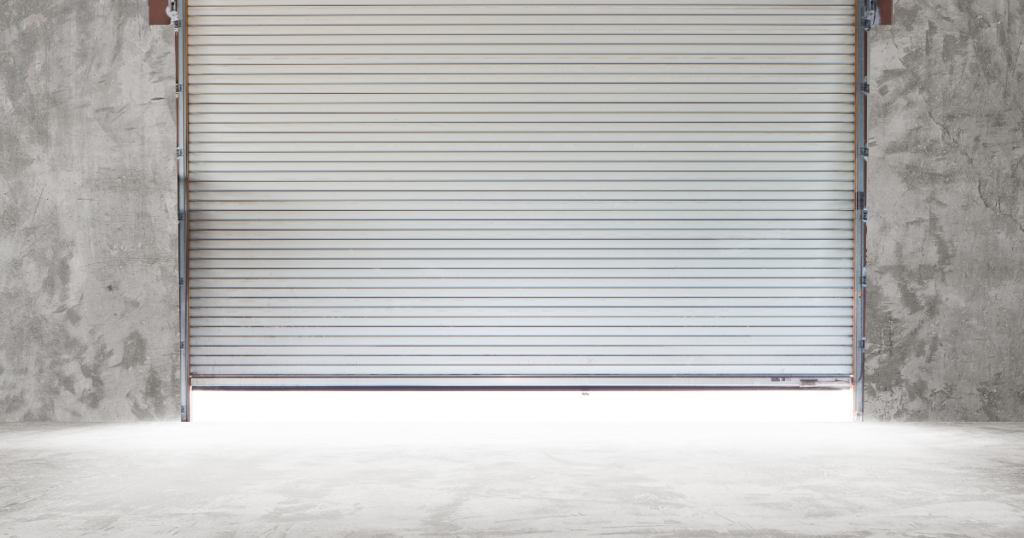How do you fix a garage door that won’t close all the way? The answer depends on the root of the issue. From blocked sensors to damaged tracks, uncover the typical fixes and when to call a professional.
Garage doors are one of the most frequently used systems in a home, and when they stop closing properly, it can quickly become more than just a minor inconvenience. Whether you’re trying to secure your home, protect your belongings, or get peace of mind, a malfunctioning garage door needs immediate attention. Many homeowners ask, “How do you fix a garage door that won’t close all the way?” because this common problem can stem from several causes, ranging from simple sensor misalignments to more complex hardware issues.
Ignoring a garage door that won’t close completely is risky. Aside from compromising security, it can lead to energy inefficiency and potentially more expensive repairs if unresolved. The good news is that many of the issues behind a partially closing garage door can be diagnosed and resolved without requiring a full replacement. By understanding the core problems and practical solutions, you can confidently approach the issue and avoid unnecessary expenses.
Check the Photo-Eye Sensors First
Most modern garage doors are equipped with photo-eye sensors, safety features that detect objects in the door’s path. The door won’t close completely if anything blocks or misaligns these sensors.
How to Fix It:
- Clean the Sensors: Use a soft, damp cloth to gently wipe away any dust, cobwebs, or debris on the lenses. Dirt buildup is a common culprit.
- Check for Alignment: Both sensors must be facing each other directly. Look for a small LED light on each sensor; if it is flashing or off, it may be misaligned.
- Adjust the Sensors: Slightly move the sensors until the LED lights stay solid. Use a level to ensure they’re aligned at the same height on each side of the garage door.
- Replace if Necessary: If cleaning and alignment don’t help, the sensors may be faulty. Disconnect power, replace the sensors according to your opener’s manual, and test the system.

Realign or Replace the Safety Sensors (If Misalignment Persists)
Even if your photo-eyes are clean, they might be slightly out of place due to vibrations from daily use or accidental bumps.
How to Fix It:
- Use a Level: Ensure both sensors are mounted at the same height.
- Secure Them Firmly: Tighten any loose brackets that may be causing them to move out of position.
- Replace as a Last Resort: Persistent issues might mean the sensors are damaged internally. In that case, replace them entirely for optimal performance.
Inspect the Tracks and Rollers for Obstructions or Damage
Sometimes, the issue isn’t electrical, it’s mechanical. Over time, tracks and rollers can accumulate debris or damage, causing the door to jam or reverse before closing fully.
How to Fix It:
- Remove Debris: Check the tracks for dirt, small rocks, or other objects. Wipe down with a damp cloth and mild cleaner.
- Check for Dents: Look closely for any bends or dents in the tracks. Small dents can be carefully tapped back into shape with a rubber mallet.
- Lubricate Rollers: Apply a silicone-based garage door lubricant to the rollers to reduce friction and improve movement.
- Replace Damaged Parts: A professional should replace severely worn rollers or heavily bent tracks.
Adjust the Limit Switch Settings on the Garage Door Opener
The limit switch controls how far the garage door travels when opening or closing. If these settings are off, the door might stop too early or even reverse before hitting the ground.
How to Fix It:
- Locate Adjustment Screws: The garage door opener motor unit typically labels these “Up” and “Down.”
- Make Small Adjustments: Turn the “Down” screw slightly clockwise to increase the closing limit. Test the door after each adjustment to avoid over-correcting.
- Refer to Your Manual: Each brand may vary, so consult your garage door opener’s instruction manual for specific guidance.
Test the Remote and Wall Control Systems
Sometimes the issue lies not in the door itself, but in how it’s being controlled. Faulty remotes, wall switches, or signal interference can all cause irregularities in door operation.
How to Fix It:
- Replace Remote Batteries: A simple battery change often resolves inconsistent behavior.
- Check Wall Switch: If the door works with the remote but not the wall control (or vice versa), the problem may be with the wiring or the switch itself.
- Look for Interference: Devices like wireless routers or LED lights can disrupt remote signals. Try moving or turning off nearby electronics to isolate the issue.
- Reset the Opener: Reprogramming the remote or resetting the opener to factory settings can sometimes resolve deeper electronic glitches.
Examine the Garage Door Springs and Cables
Worn-out springs or frayed cables affect the door’s balance and tension, potentially causing it to stop short or reverse during closing. These components are under high tension and require careful handling.
What You Should Do:
- Visual Inspection Only: Look for obvious signs like slack cables, broken springs, or loud noises during operation.
- Do Not Attempt DIY Repairs: Garage door springs and cables can be extremely dangerous. If you suspect an issue, contact a professional technician immediately for a safe and proper repair.
When All Else Fails: Call a Professional
Sometimes, the answer to “how do you fix a garage door that won’t close all the way?” lies beyond DIY fixes. If you’ve gone through the common issues and still can’t resolve them, it’s time to call experts. Professionals can diagnose underlying mechanical or electrical problems that aren’t visible to the untrained eye.
‘For trusted service, contact Rowlett Garage Door and Gate. Their experienced technicians ensure that repairs are done safely, correctly, and in compliance with manufacturer specifications, giving you peace of mind and a fully functional new garage door.

Frequently Asked Questions
Why isn’t my garage door closing all the way?
A garage door may not close due to misaligned sensors, obstructions in the track, or incorrect close-limit settings. Damaged rollers, cables, or a weak motor can cause incomplete closing. Check for blinking sensor lights or beeping openers, which often signal the specific issue.
How do you fix a garage door that does not close all the way?
First, inspect and clean the safety sensors, ensuring they’re properly aligned. Then check for obstacles or damage in the track or door path. If those are clear, adjust the close-limit setting on the opener so the door can travel farther downward.
How do I adjust the closing pressure on my garage door?
To adjust closing pressure, locate the force adjustment screws on the garage door opener—usually labeled “down force” or similar. Turn the screw slightly clockwise to increase closing force, allowing the door to press down more firmly. Make minor adjustments and test each time to avoid damage or safety issues.
How do I adjust my garage door to go down further?
To make your garage door close farther, adjust the down travel limit screw or dial on your opener. Turn it slightly clockwise to extend the door’s downward range. After each adjustment, check the door’s operation to ensure it doesn’t close too far or hit the ground forcefully.
How to fix garage door alignment?
To fix alignment, check the vertical tracks on both sides for bends or looseness. Loosen the mounting brackets, gently tap the tracks into the proper position, and then retighten the bolts. Also, inspect and replace any worn rollers, hinges, or cables that could cause uneven movement.
Conclusion
How do you fix a garage door that won’t close all the way? The answer begins with a clear, step-by-step approach. Start with simple fixes such as cleaning and realigning the safety sensors, then move on to more detailed inspections like adjusting the limit switch or checking the tracks for damage. Many of these problems can be resolved without replacing the entire system.
Understanding how your garage door works and recognizing specific symptoms can help you avoid unnecessary garage door repairs. If the issue persists after trying these solutions, it is best to contact a professional. Trained technicians should handle complicated matters like spring tension problems or electrical faults.
For reliable, prompt, and professional service, trust Rowlett Garage Door and Gate. Whether you need a small adjustment or a complete repair, their experienced team is ready to restore your garage door so it closes properly every time.
End Note
Rowlett Garage Door and Gate specializes in garage door repairs, maintenance, and installation across North Texas. If your garage door hinges are sagging or misaligned, we can replace or repair them efficiently. We also offer expert advice if your existing hinges aren’t strong enough for your current door setup.
We proudly provide garage door repair services for residential and commercial properties. If your issue is spring-related, our spring repair experts are available to assist. Explore our full list of services to find the solution that fits your needs.
Whether you’re in Rockwall, Anna, TX, or anywhere nearby, our experienced technicians are just a call away. Learn more about us, read our customer Q&A, and trust our team to handle your current and future garage door needs with precision and care.
Rowlett Garage Door and Gates
5813 Cypress Dr, Rowlett, TX 75089, United States
+14699208704

